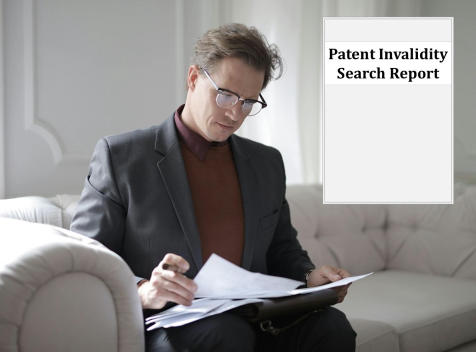How to conduct a Patent Invalidity Search : Best Practices
Table of Contents
- How to conduct a Patent Invalidity Search : Best Practices
- Introduction
- 1. Clearly Define the Scope of the Invalidity Search
- 2. Utilize Multiple Databases and Search Tools
- 3. Conduct Keyword-Based and Classification-Based Searches
- 4. Review Prior Art for Enablement and Claim Overlap
- 5. Expand the Search to Global Prior Art
- 6. Consider Expert Interviews and Witness Testimony
- 7. Document and Organize All Findings for Litigation
- Conclusion
- Why an Invalidity Search Is a High-ROI Investment
- Experience the Power of a Comprehensive Invalidity Search— Without any Risk
- Who Can Benefit from This Pilot Search?
- You may reach us with your requirement with this form
Introduction
A patent invalidity search is a crucial process conducted to identify prior art that can potentially invalidate a granted patent. Whether you are an attorney preparing for litigation, a company defending against infringement claims, or a business looking to challenge a competitor’s patent, following the best practices ensures the search is thorough, effective, and strategically valuable.
A poorly conducted invalidity search can result in missed prior art, leading to legal disadvantages or unnecessary licensing costs. On the other hand, a well-executed search can save businesses millions of dollars by proving that a patent is invalid and preventing costly settlements or infringement lawsuits.
This article outlines the best practices to follow when conducting an invalidity search, along with real-world cases where prior art searches played a crucial role in patent litigation.
1. Clearly Define the Scope of the Invalidity Search
Why It’s Important
The first step in conducting an invalidity search is to clearly define the scope of what you are searching for. This includes:
- The patent number and its claims that need to be challenged.
- The priority date (earliest filing date that defines the cut-off for prior art).
- The jurisdictions where prior art is relevant (U.S., EU, WIPO, etc.).
Example: If a company receives an infringement lawsuit for a patented process in AI-based image recognition, their invalidity search should focus on older AI-related patents, research papers, and industry standards that predate the patent filing date.
Best Practice
- Break down the claims of the patent into key technical features to identify search keywords.
- Focus on the earliest priority date to ensure that prior art is valid.
- Use patent attorneys or search experts to help define the right search queries.
2. Utilize Multiple Databases and Search Tools
Why It’s Important
No single database contains all prior art. Using multiple search tools increases the chances of finding relevant prior art.
Best Practice
- Use patent databases: USPTO, EPO, WIPO, Google Patents, PATENTSCOPE, Espacenet.
- Explore non-patent literature: IEEE Xplore, Google Scholar, ScienceDirect, PubMed, ArXiv.
- Check commercial product records: Old product catalogs, trade show archives, and industry reports.
- Use the Wayback Machine to find older website publications.
Example: In Microsoft v. i4i (2011), Microsoft challenged a patent using a prior art reference from an old software manual. Since it was not in traditional patent databases, they relied on non-patent literature sources.
3. Conduct Keyword-Based and Classification-Based Searches
Why It’s Important
Relying only on keywords can miss relevant prior art due to variations in terminology. Classification-based searches (using CPC or IPC codes) ensure that all similar inventions are examined.
Best Practice
- Start with a broad keyword search, then refine it.
- Use Boolean operators (AND, OR, NOT) to create complex queries.
- Perform a classification-based search using the Cooperative Patent Classification (CPC) and International Patent Classification (IPC) codes.
- Identify assignees (companies) and inventors who have filed similar patents.
Example: If you are challenging a battery technology patent, search for prior patents under CPC codes H01M (batteries) instead of just searching for “lithium-ion battery technology.”
4. Review Prior Art for Enablement and Claim Overlap
Why It’s Important
Finding prior art is not enough—it must be enabling (fully describes the invention) and overlaps with the claims of the patent you are challenging.
Best Practice
- Compare each claim of the patent with prior art documents.
- Check if prior art fully enables someone to recreate the invention.
- Look for direct overlaps between prior art disclosures and patent claims.
Example: In Apple v. Samsung (2012), Samsung challenged Apple’s design patents by showing prior art in old phone designs but failed to prove full enablement. As a result, some of Apple’s patents remained valid.
5. Expand the Search to Global Prior Art
Why It’s Important
Patent laws recognize global prior art, meaning an invention doesn’t need to be patented in a specific country to be used as prior art.
Best Practice
- Search for patents in European (EPO), Japanese (JPO), Chinese (CNIPA), and Korean (KIPO) databases.
- Consider foreign non-patent literature (NPL), such as research papers and product manuals published in other languages.
- Use machine translation tools to analyze foreign documents.
Example: In a biotech patent dispute, an older Japanese research paper describing a drug formulation helped invalidate a U.S. patent because it was publicly available before the U.S. patent’s filing date.
6. Consider Expert Interviews and Witness Testimony
Why It’s Important
In some cases, prior art exists in oral disclosures, university research, or industry practices that were never officially documented.
Best Practice
- Interview industry experts to gather undocumented prior art.
- Obtain affidavits from witnesses who can testify about prior knowledge.
- Use declarations from inventors and researchers to support invalidity claims.
Example: In Pfaff v. Wells Electronics (1998), a witness’s testimony about a publicly sold product before the patent’s filing date led to the patent’s invalidation.
7. Document and Organize All Findings for Litigation
Why It’s Important
A well-organized invalidity search report is essential for legal proceedings.
Best Practice
- Clearly document each prior art reference, including publication dates and relevance.
- Organize the prior art findings by claim overlap to show why the patent is invalid.
- Work with patent attorneys to format the findings into a legally persuasive report.
Example: In Amazon’s One-Click Patent case, the prior art findings were meticulously presented in a detailed invalidity report, which played a key role in limiting Amazon’s patent rights.
Conclusion
A successful patent invalidity search requires a structured approach and adherence to best practices to uncover the most relevant prior art.
By following these best practices, businesses and attorneys can increase their chances of invalidating weak patents, avoid costly litigation, and protect their innovations from unjust infringement claims.
Need expert assistance in conducting an invalidity search? Contact us today to get a comprehensive, professionally conducted invalidity search report that can help you make informed legal and business decisions.
Why an Invalidity Search Is a High-ROI Investment

A well-executed invalidity search can mean the difference between:
✔ Winning vs. Losing a Patent Litigation – A single overlooked piece of prior art can make or break a case, saving millions in damages and legal fees.
✔ Gaining vs. Losing Negotiation Leverage – Invalidating a competitor’s patent before entering a licensing or infringement dispute can shift the power dynamics in your favor.
✔ Securing vs. Risking Market Freedom – Before launching a product, knowing whether an asserted patent is truly valid can prevent unnecessary licensing fees or redesign costs.
Simply put, an invalidity search is not an expense—it’s an investment with the potential for significant financial and strategic returns. However, we know that you may want to validate the quality of our work before committing to long-term projects.
Experience the Power of a Comprehensive Invalidity Search— Without any Risk
When it comes to patent litigation, licensing, and enforcement, every legal argument, business decision, and competitive strategy hinges on the strength—or weakness—of a patent.
At Patent Attorney Worldwide Pvt. Ltd., we specialize in conducting highly strategic patent invalidity searches that uncover critical prior art—often the key to nullifying a competitor’s patent, avoiding costly litigation, or gaining leverage in negotiations.
We understand that choosing a reliable partner for invalidity searches is a critical decision—one that must be based on results, not just promises. That’s why we are offering you an opportunity to experience our expertise through a risk-free pilot project—at the very minimum cost, that is no-profit costs.
Here’s how it works:
- Pilot Search at Minimum Cost – You get a comprehensive invalidity search at the lowest possible cost, ensuring no financial risk in evaluating our expertise.
- Full-Scale Research & Analysis – Unlike generic or automated searches, our manual deep-dive approach ensures we uncover even the most obscure prior art, whether from patents, non-patent literature, or global databases.
- Strategic & Actionable Insights – We don’t just provide a list of references; we analyze, categorize, and map prior art to show why a claim is invalid and how it can be effectively used in litigation or negotiations.
- No Obligation, Just Results – If our search delivers the value we promise (as we are confident it will), we can discuss regular engagements. If not, you still walk away with a top-tier search at near-cost pricing—with no further commitment.
Who Can Benefit from This Pilot Search?
- Law firms & patent litigators looking for a trusted partner in high-stakes patent invalidity cases.
- Corporations & in-house counsel needing a solid prior art strategy before licensing, product launches, or legal disputes.
- Entrepreneurs, inventors, and professionals requiring a high-quality invalidity search to safeguard their interests.
Feel free to contact us for your questions or concerns, we would be happy to answers all of your questions. We can get started with a pilot invalidity search project and let the results speak for themselves.
Let’s work together to uncover prior arts that makes an impact.
